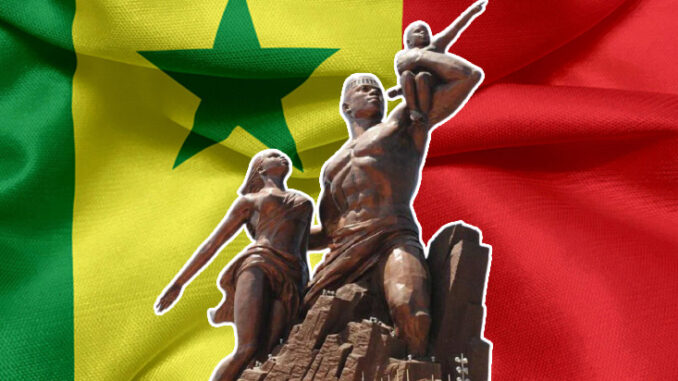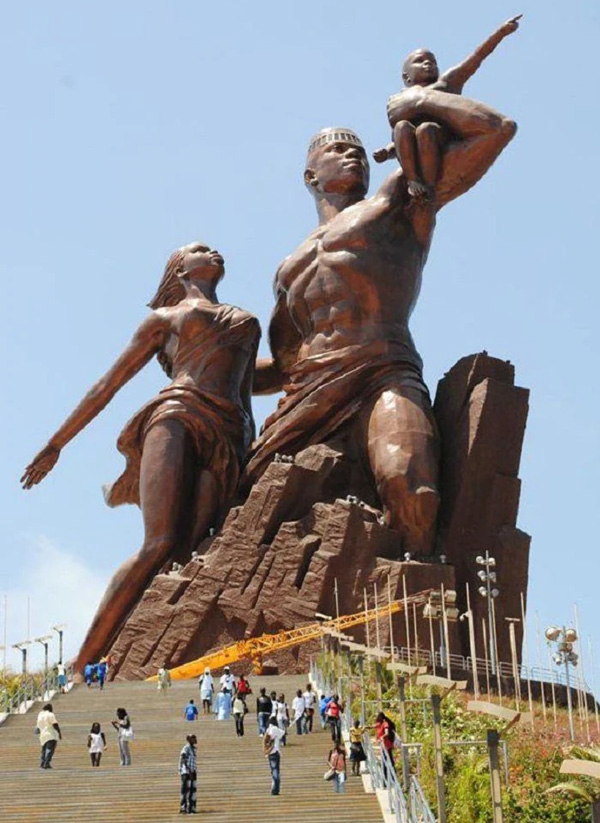
In the heart of Senegal stands a colossal symbol of ambition, the African Renaissance Monument. Erected to mark the 50th anniversary of Senegal’s independence from French colonial rule, this towering statue is not only a testament to the nation’s resilience but also a source of significant controversy. From its origins with a North Korean construction company to the stark Soviet-style design, the African Renaissance Monument has been a subject of debate, criticism, and cultural clashes.
The Origins: North Korean Construction and Soviet-Style Design
The African Renaissance Monument, standing at an impressive 49 meters (160 feet), was constructed by a North Korean company, Mansudae Overseas Projects. The involvement of a North Korean firm in an African project raised eyebrows, and the reasons behind this choice remain shrouded in mystery. Some speculate that it was a strategic move to secure favorable terms or perhaps a reflection of political alliances. Regardless of the motives, the monument’s design bears a striking resemblance to Soviet-era statues, a nod to Senegal’s political history.
The Statue Details
Crafted from bronze and standing atop a hill in Dakar, the statue depicts a man, woman, and child reaching out towards the sky, symbolizing the emergence and progress of the African continent. The monument, with its sleek lines and imposing presence, is an architectural marvel. It measures 49 meters from the base to the tip of the torch, making it one of the tallest statues in Africa.

Controversies Surrounding the Monument
Financial Concerns:
Despite its grandeur, the African Renaissance Monument has not been without criticism. Many argue that Senegal, classified as a heavily indebted poor country, could have better allocated the substantial funds used in its construction. The economic strain of such a monumental project has fueled debates about prioritizing basic needs over extravagant symbols.
Cultural Sensitivity:
Senegal, predominantly an Islamic country, is known for its cultural conservatism. The choice to depict the figures with minimal clothing sparked cultural debates, with many finding it culturally risky. Some argued that the statue’s design clashed with Islamic values and posed a threat to the traditional norms of the society.
Alleged Corruption Scandal:
Perhaps the most damning controversy surrounding the African Renaissance Monument is the alleged corruption scandal. Rumors suggest that the country’s leader pocketed a substantial percentage, reportedly around 35%, of the profits generated from the monument’s construction. This alleged corruption has further fueled public dissatisfaction and contributed to the monument being seen as a symbol of extravagance rather than national pride.
The African Renaissance Monument, with its towering presence and controversial history, stands as a complex symbol of Senegal’s aspirations and challenges. While it undoubtedly adds to the skyline of Dakar, the monument also raises questions about the allocation of resources, cultural sensitivity, and the ethical considerations involved in such grandiose projects. As Senegal continues to navigate its path of progress, the African Renaissance Monument remains a potent symbol, not just of African resurgence, but also of the controversies that can accompany such ambitious endeavors.
